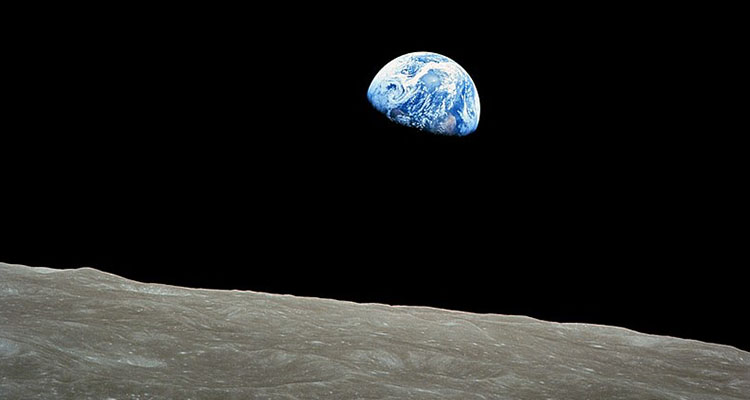For the vast majority of the human tenure on this planet, the surface of the Earth — or very near the surface — was the sole domain of human direct first-hand experience of the universe. Other than the occasional human jumping or falling off a cliff or out of a tree, humans kept their feet very close to the ground. Except for lifting kites, balloons and gliders with human passengers, humans were essentially an Earth-bound species. Not until the dawn of powered flight in the first years of the 20th century could humans truly be considered as three-dimensional beings, able to leave the gravitational confines of the Earth’s surface.
I have found it strange that history remains rather murky (and seems to get murkier as time goes on) as to exactly when and who were the first to invent and fly controlled powered aircraft. You would think that a simple answer would be, well, simple. Does the honor go to two United States bicycle engineers, Orville and his brother Wilbur Wright, or to Brazilian engineer, Alberto Santos Dumont? There is ample evidence for both camps to be first to invent and pilot the very first working powered aeroplane. Alas, presently, there are at least seven prominent and distinctly different groups that claim to have invented, developed and tested their heavier-than-air, human-piloted, flying machines in the dawning years of the 1900s. It seems that even in the early 1900s, photographs, documents, newspaper accounts and eye-witness’ statements used as evidence were often manipulated in a sort of “aero” fake news, now over a century in our past. I will leave it to my gentle readers to decide the truth here.
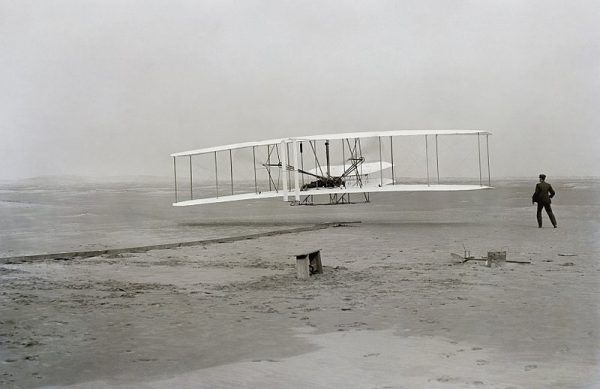
When did controlled powered flight take place, and who was it that accomplished the first powered human piloted flight may be a difficult historical and political puzzle, that may elude a final solution. We may better be able to answer these same questions concerning space exploration. Outer space is defined as the expanse that exists beyond the surface of the Earth and extends beyond the confines of our solar system, beyond our closest stellar neighbors, beyond our home galaxy, the Milky Way, and beyond the most distant galaxies our telescopes can image.
There is no exact physical interface separating the Earth’s surface and its atmosphere on one side and where outer space starts on the other side. An agreed-upon boundary for space is defined as an altitude of 100 km (just over 62 miles) above the mean sea level of the Earth. This boundary line is called the “Kármán Line” and is used for aerospace record-setting and various international treaties dealing with the exploration, utilization and exploitation of outer space and the bodies and objects in outer space.
The record keeping (who is first and when) for space exploration seems better kept than powered human piloted flight for numerous reasons. Space exploration is many orders of magnitude (one order of magnitude is 10x, two orders of magnitude is 100x, three orders of magnitude is 1,000x, etc.) more expensive and technically difficult than powered human flight. Pioneers at the dawn of aviation could build working powered and steerable gliders capable of supporting the weight of an adult human with a small team, working in a bicycle shop, using ordinary materials, supported by little funding and guided by ordinary engineering skill sets in their quest to tame the sky.
At the beginning of space exploration, building devices able to enter and explore space required new technologies and new materials. To research, develop, build and test space vehicles required levels of resources, technology, ingenuity and funding on such a scale that only wealthy nations could afford to play.
The first recorded artificial or human-made object to leave the surface of the Earth and technically enter outer space by passing through the 100 km “Kármán Line” boundary, was a German V-2 rocket (MW 18014) during a test flight on June 20, 1944, reaching an altitude of 176 km. It is a difficult technical accomplishment to lift an object 100 km above the surface of the Earth. This takes rocket power.
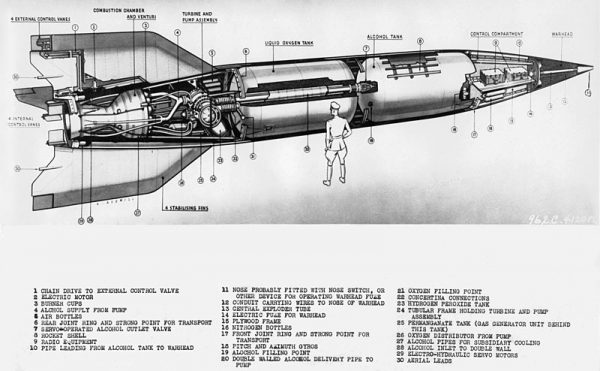
Aircraft and balloons need thick atmospheres to lift them and therefore can reach altitude records (without people in them) of only 29.5 km and 53 km respectively. It is about an order of magnitude harder to put an object into low Earth orbit — where it is moving so fast that as it falls back to Earth the object keeps missing the ground — and “orbits” the Earth. The higher the orbit, the less atmosphere the object is orbiting in, and the smaller the atmospheric drag on the object, and thus the longer the object will stay in orbit. Objects in very low Earth orbits only orbit the Earth a few times and come down (re-enter the Earth’s atmosphere) in just hours. Higher Earth orbits give longer orbital lifetimes in days, weeks, months and years. Higher Earth orbits are above so much of the Earth’s atmosphere that the atmospheric drag is essentially zero, and the satellite will orbit the Earth indefinitely.
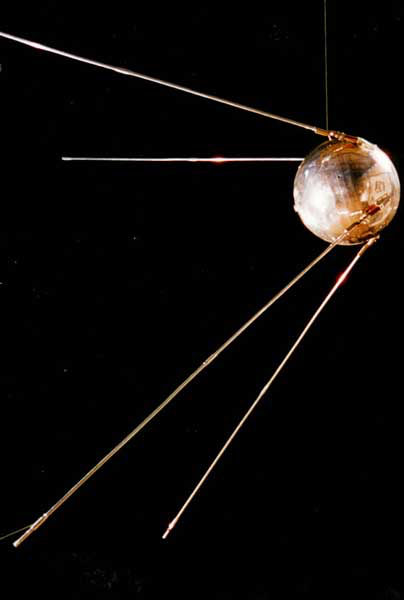
The “Space Age” is said to have begun on Oct. 4, 1957, with the successful launch of Sputnik 1 (Satellite 1), the first artificial Earth satellite, by the empire formerly known as the U.S.S.R. Sputnik 1 was a small 58 cm (23 inch) diameter shiny metal sphere with four trailing radio antennas and orbited the Earth once every 96.2 minutes. Having an elliptical (not circular) orbit ranging from 215 km (134 miles) perigee to 939 km (583 miles) apogee meant that Sputnik 1 was low enough at perigee for the Earth’s atmosphere to drag it back to Earth by Jan. 4, 1958. Sputnik 1 was a battery-powered radio transmitter with a mass of 83.6 kg (on Earth’s surface, Sputnik weighed about 184 pounds) detectable by ham radio operators for 22 days when it was above the local horizon.
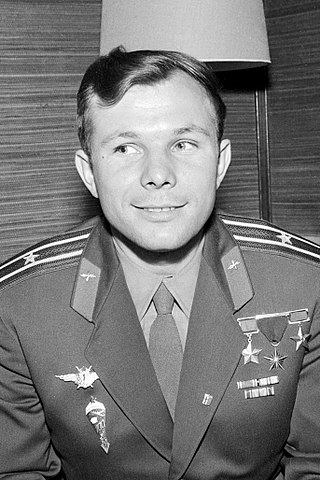
The next “big” milestone in the exploration of space was by the Soviet pilot and cosmonaut (from the Greek literally: Universe Voyager or Universe Sailor) Yuri Gagarin, the first human to pass beyond the “Kármán Line” altitude as a passenger aboard Vostok 1. Yuri Gagarin officially entered outer space on April 12, 1961. Gagarin’s trip into space lasted 108 minutes consisting of a single low Earth orbit. However small a technical feat this appears from our present viewpoint, we need to remember, to date: only national aerospace agencies can assemble enough resources of money, technology and ingenuity to send human beings into orbit. Sadly, the U.S. presently lacks this capability. The human species was officially altered on April 12, 1961, from a species that only lived on Earth to a fledgling spacefaring species — but only just barely.
Over the next 7.7 years, there were more launches of humans into space. In the U.S., there were launches of astronauts (Star Voyagers) in ones (Mercury), then twos (Gemini) and finally threes (Apollo). While human exploration of space became more and more sophisticated, the launches of robotic spacecraft to the moon and the closest planet Venus became more common.
Except for Gemini XII, the human exploration of space during this timeframe was limited to low Earth orbit, typically a few hundred km above the Earth’s surface and still within the upper levels of Earth’s thinning atmosphere.
Some may disagree, but I think next great milestone of human exploration of space took place with the six-day mission of Apollo 8 and its human crew of three astronauts during Dec. 21, 1968, and Dec. 27, 1968.
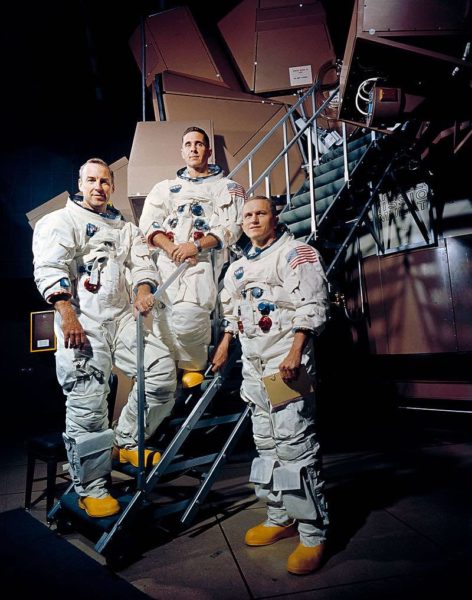
There is much to this story (check out this interview for more information, but suffice it to say that the star voyagers of Apollo 8 would venture more than three orders of magnitude (almost 2,000x) farther than the typical human space mission to low Earth orbit at that point in time.
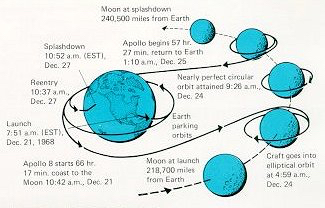
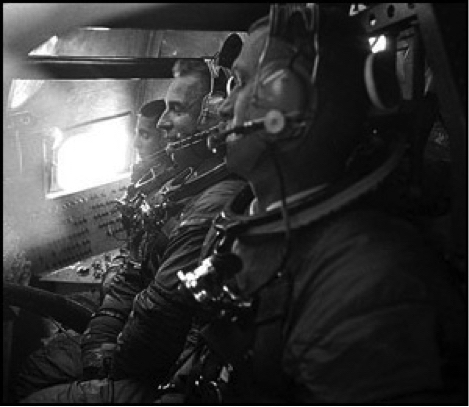
Let me put the Apollo 8 mission in an outline/bullet form so you can better appreciate what the crew of Apollo 8’s mission accomplished.
- Blast off as the first human crew aboard the new Saturn V rocket
- Enter low Earth orbit
- Apollo 8 was the second Apollo mission with a crew aboard
- The Apollo 8 astronauts would be the first humans to completely leave the safety of low Earth orbit and the protective shielding of the Earth’s magnetic field
- First humans to not be in orbit around the Earth
- They would travel 68 hours (2.8 days) to the Earth’s moon averaging 384,400 km away, about 2,000x the altitude to low Earth orbit
- First humans to see the Earth as a tiny world that can be eclipsed by an out-stretched thumb
- Go slow enough to be the first humans to be captured by the relatively weak lunar gravity well of another world on Dec. 24, 1968
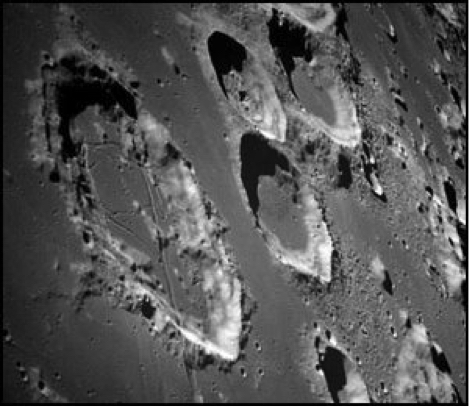
- First humans to enter a low (or any) lunar orbitorbit the moon 10 times over 20 hours
- First humans to see firsthand the surface of the moon close-up
- First humans to observe the lunar “dark side” (the back of the moon — we from Earth can only see one side of the moon)
- Follow a carefully choreographed NASA script to take pictures of future landing sights and lunar landmarks of specific scientific interest
- Leave the lunar orbit (on Dec. 25, 1968) and lunar gravity at the right time and angle to return to Earth
- Re-enter the Earth’s atmosphere on Dec. 27, 1968
- Not die
- Splashdown
- Get rescued
- Go home to their families
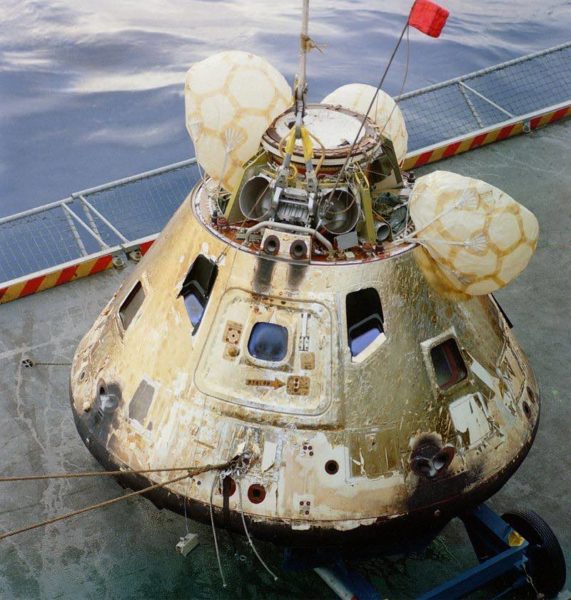
As Apollo 8 was coming around for their fourth lunar orbit, emerging from the back side of the moon, the crew noticed looming over the stark, grey, airless, cold, lifeless, cratered moonscape below that the Earth was rising above the lunar horizon. Astronaut Bill Anders did the unthinkable and went off script and took a picture of our home world, where everyone that has ever been and ever loved has lived. The home world of every story, poem, song and rhyme ever written. The only place in the solar system known to harbor life. The desolate lunar surface offered a study in contrasts and opposites with the blue-white Earth.
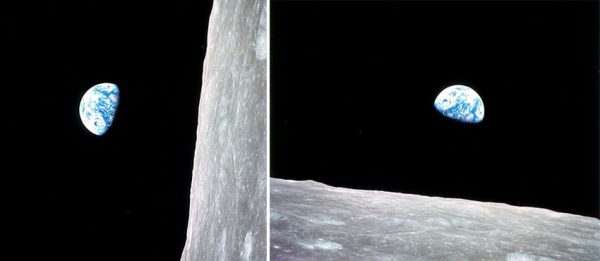
The image, now known as “Earthrise,” was not in the NASA script of images. No one at NASA anticipated that this would be a worthwhile mission image so it was not NASA approved, and yet it is thought by some to be the most important thing accomplished of not just Apollo 8, but some space historians say the importance of this one image of the Earthrise rivaled even the collective importance of the first Moon landing by Apollo 11, only seven short months in the future.
The Earthrise image is said to have inspired the first Earth Day celebration in April of 1970 and much of the awareness of the environmental movement around the world. The Earthrise image was selected as the very first of Life magazine’s 100 Photographs That Changed the World.
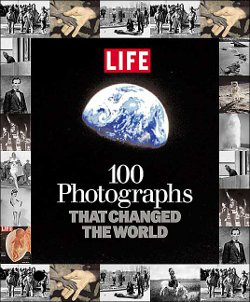
That picture of the Earth rising next to the moon gives hope and inspiration that just maybe we humans have grown smart enough to get along with other neighboring members of our species. The iconic Earthrise image shows that the Earth, after all, is a small place. Perhaps xenophobia is written in our DNA causing mistrust and fear of others with any differences from ourselves. Perhaps, we as a species are “tribalistic,” fearing and distrusting those not of our “family,” close friends or region.
The Earthrise image proves that if we fight against our DNA, scripting us to hate those who are different from ourselves, these urges of violence to “others,” we can do great things. The Earthrise image clearly shows we are smart enough when we work together to take a self-portrait of our home world from the moon, in person, not robotically. Fragmentation into small fearful bands by our ingrained fear of those not “us” can be overcome. Working together creates a collective wisdom and intelligence that can accomplish great things — greater than can be accomplished by a singular clan.
The Earthrise image reminds us as a single visual statement that we are, all of us, are one single family sharing one small fragile world, an oasis in the inhospitable darkness of space. Happy 50th anniversary to that global realization.
• Robert E. Strong received a bachelor of arts degree in physics with minors in mathematics and philosophy and has a master’s degree in space studies. Robert taught secondary school math and science in Benin, West Africa, (Peace Corps volunteer) and in American Samoa. He worked as a physicist in a research laboratory. Robert is president of the Near Earth Object Foundation dedicated to educating the general public about Near Earth Objects and providing public StarWatches. Robert and his wife Libby started the SMART-Center in 1994, a hub for science- and math-related activities for area schools, educators and the community. They also operate the SMART Centre Market — an interactive hands-on science store in Wheeling, featuring Orion telescopes, science toys and Kirke’s ice cream.


